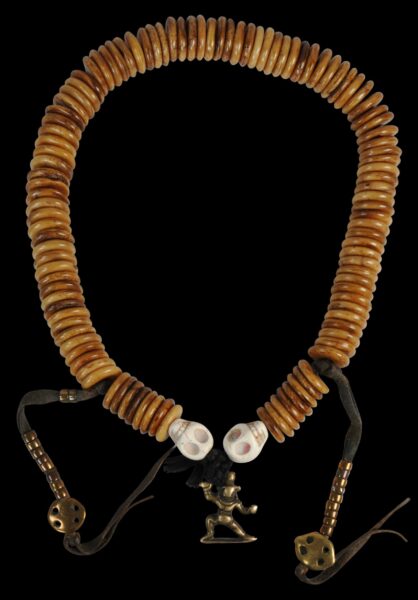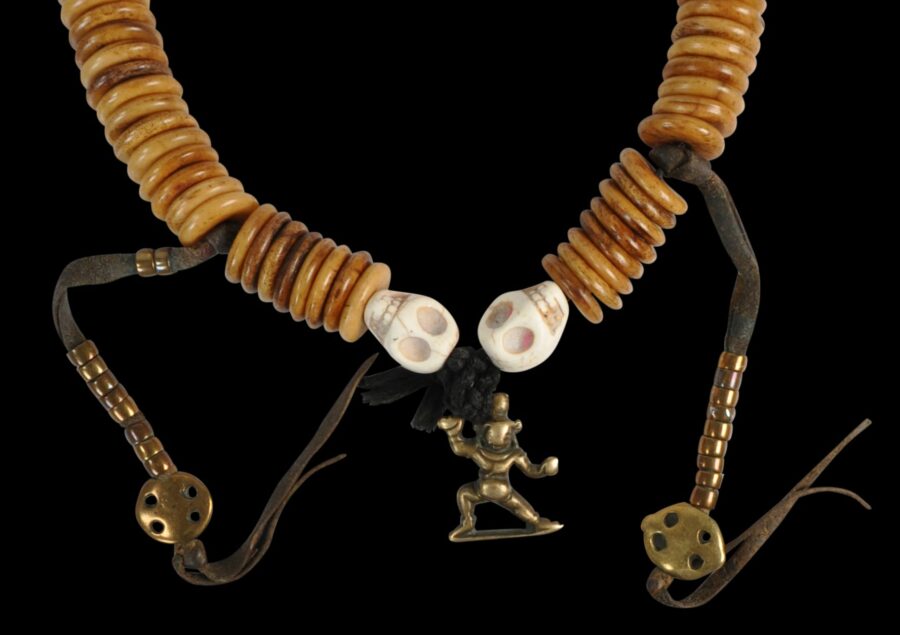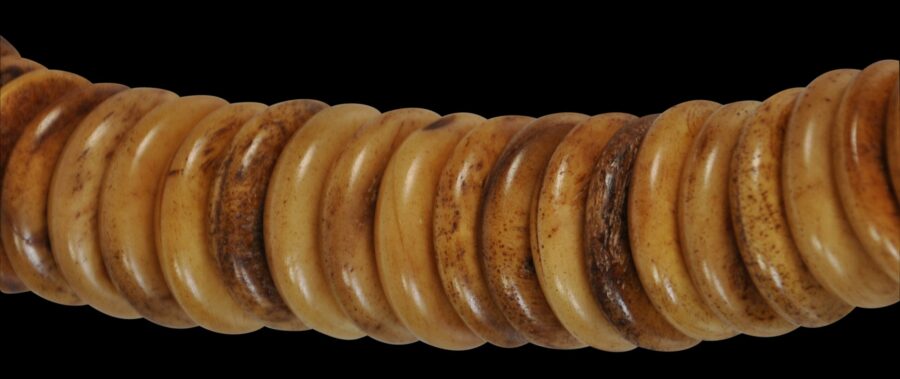This Tibetan Buddhist rosary (sin-‘phen) is of the finest quality. The patina from age and handling is incontrovertible.
It comprises disk-shaped human bone beads with rounded edges each of which has the most exquisite, glossy patina. The small brass tokcha attached shows much age and wear. It is in the form of the Bodhisattva Vajrapani, and serves as a central marker. On either side of this are beads of chank shell carved in the form of human skulls. There are also two strands of well-worn copper counter beads, with tokcha terminals.
Buddhist rosaries evolved from ancient Hindu-Indian mala prayer beads. In Tibet, they were used by both laymen and monks. Generally, they comprise 108 beads plus others as counters or markers. The main prayer beads were used to count repetitions of prayers.
Tokchas are small talismans usually of bronze or copper alloy that Tibetans used to wear about their person to protect them and to absorb evil. Particularly effective or powerful tokchas would be sold on and passed down through the generations so that genuine and powerful tokchas should show a great deal of wear, as in the case of the example here.
The set here is in a very fine, stable and wearable condition. Each element is smooth from wear, and handling. The bone beads all have a beautiful, deep creamy patina.
References
Bashkanov, M., M. Bashkanov, P. Petrov, & N. Serikoff, Arts from the Land of Timur: An Exhibition from a Scottish Private Collection, Sogdiana Books, 2012.
Heller, A., Early Himalayan Art, Ashmolean Museum, 2008.
Henss, M., Buddhist Ritual Art of Tibet: A Handbook on Ceremonial Objects and Ritual Furnishings in the Tibetan Temple, Arnoldsche, 2020.
Reynolds, V., Tibet: A Lost World: The Newark Museum Collection of Tibetan Art and Ethnology, The American Federation of Arts, 1978.
Sherr Dubin, L., The Worldwide History of Beads, Thames & Hudson, 2009.
Untracht, O., Traditional Jewelry of India, Thames & Hudson, 1997.








